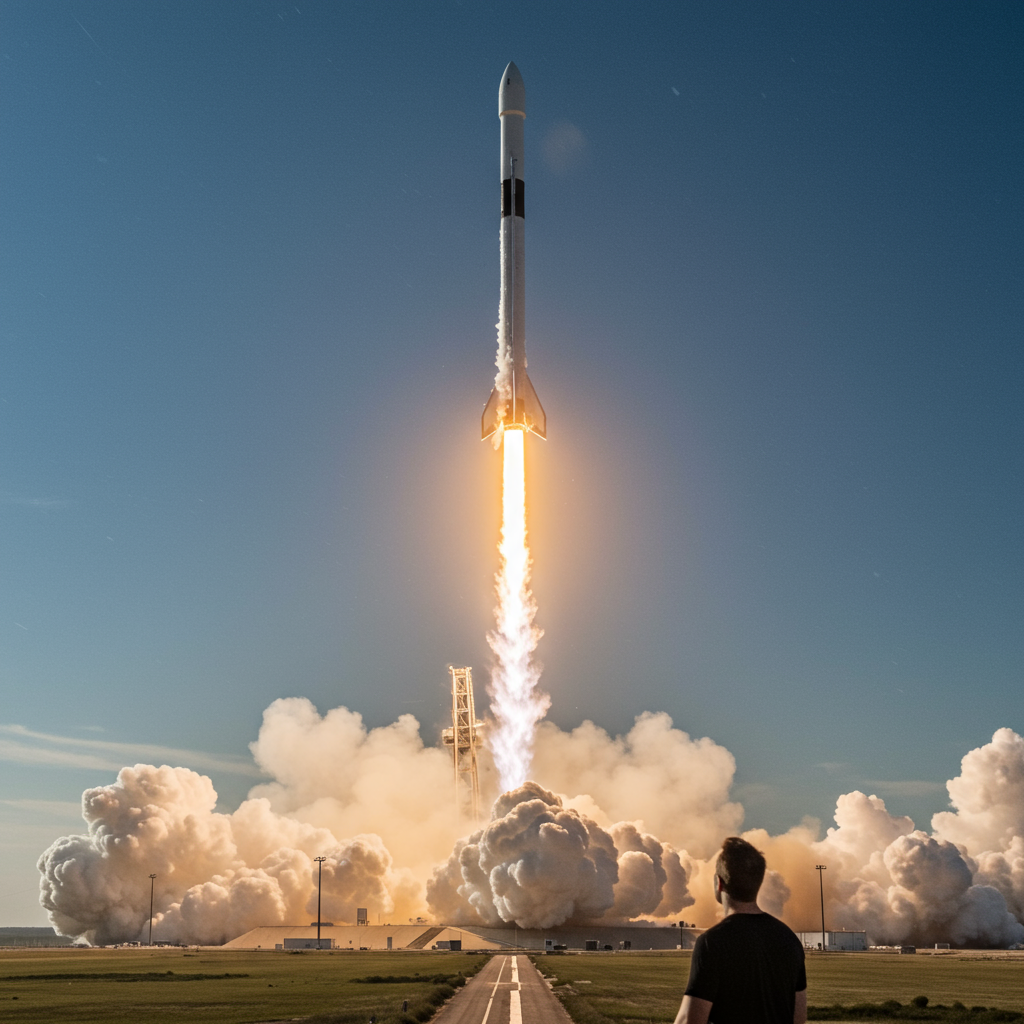SpaceX Pushes Boundaries with Ninth Starship Test Flight
SpaceX launched its ninth integrated test flight (IFT-9) of the Starship and Super Heavy rocket system on May 27, 2025, from its Starbase facility in Boca Chica, Texas. This uncrewed mission represented a crucial step in the development of the towering 400-foot vehicle, designed to be the most powerful rocket ever built and key to Elon Musk’s long-term vision of making life multiplanetary, including missions to Mars and NASA’s Artemis lunar program.
The flight, occurring just after 7:30 p.m. ET, followed two previous test attempts that also ended prematurely with the loss of the upper stage. Heightened scrutiny surrounded this launch, especially after the Federal Aviation Administration (FAA) reviewed the prior mishaps and granted permission for IFT-9, implementing expanded hazard zones along the flight path as a safety measure.
A Bold Step: Reusing a Super Heavy Booster
A significant milestone for this ninth test flight was the first-ever reuse of a Super Heavy booster. Booster B14, which previously flew during the program’s seventh test flight in January 2025, powered the Starship upper stage off the pad. This rapid turnaround for reuse highlights SpaceX’s commitment to its fully reusable rocket system goal. Booster B14 flew with 29 of its original 33 Raptor engines, demonstrating confidence in the reusability concept even at this early testing phase.
Booster Test: Steeper Descent Ends in Failure
The Super Heavy booster performed well during its ascent phase, successfully propelling Starship towards its planned suborbital trajectory. Unlike previous tests where SpaceX attempted to catch the booster back at the launch site, this mission focused on testing a deliberately steeper, more aggressive descent trajectory aimed at a splashdown in the Gulf of Mexico. This high-angle descent was designed to test aerodynamic drag and reduce the propellant needed for the final landing burn.
However, the booster suffered a catastrophic failure at the moment its engines attempted to reignite for the terminal splashdown maneuver. This resulted in the loss of the Super Heavy stage, confirming it ended up in the Gulf. SpaceX noted that while dramatic, this outcome was not entirely unexpected given the extreme nature of the test being performed during this phase of the flight.
Starship Upper Stage: Ascent Success Tarnished by Leaks
Following successful separation from the Super Heavy booster, the Starship upper stage continued its flight powered by its six Raptor engines. Initially, the ascent appeared flawless, reaching its planned suborbital path with the goal of achieving orbit height.
The mission objectives for the upper stage included two key tests:
Attempting to deploy eight simulated Starlink satellites.
Attempting an in-space reignition of a single Raptor engine.
Unfortunately, neither test was successfully completed. The doors designed to deploy the simulated satellites failed to open. More critically, an apparent propellant leak occurred during the coast phase in space.
Uncontrolled Spin Leads to Re-entry Breakup
The propellant leak caused a significant loss of main tank pressure, leading the Starship upper stage to lose altitude control and begin spinning uncontrollably. This uncontrolled spin prevented the planned in-space engine restart test.
The lack of attitude control proved fatal during re-entry into Earth’s atmosphere. Starship is designed to enter the atmosphere at a precise angle to manage the intense heat and aerodynamic stresses using its heat shield. Entering in a spin meant the vehicle could not maintain the correct orientation. Consequently, the Starship upper stage experienced a catastrophic breakup high in the atmosphere, rather than a controlled re-entry and splashdown in the southern Indian Ocean as originally planned. SpaceX referred to this event as a “rapid unscheduled disassembly.”
Learning from Failure: Next Steps for Starship
While both stages were lost, SpaceX founder Elon Musk highlighted the positive aspects of the flight, noting that Starship reached the scheduled engine cutoff point and experienced no significant loss of heat shield tiles during ascent – improvements over previous tests. The primary issues were attributed to the leaks causing pressure loss during the coast and re-entry phases.
SpaceX emphasized that a vast amount of valuable data was gathered from this test. This iterative approach, where each flight provides critical information regardless of outcome, is central to the Starship program’s development strategy. Engineers will now analyze the telemetry to identify the root causes of the leaks and implement necessary fixes. Musk has indicated plans for a faster launch cadence for future Super Heavy flights, targeting approximately one per month or less, assuming rapid analysis and modifications are possible.
Starship’s Broader Ambitions: Mars & Moon Landings
The development of Starship is critical not only for SpaceX’s long-term goal of establishing a multiplanetary presence but also for its major contracts, including serving as the Human Landing System (HLS) for NASA’s Artemis program, which aims to return astronauts to the lunar surface. The Block 3 version of Starship is required for the Artemis 3 mission, currently targeted for no earlier than mid-2027, with delays partly linked to Starship’s readiness.
Key capabilities still needing demonstration include on-orbit propellant transfer, essential for both lunar missions and ambitious Mars flights. While progress continues, hundreds of test flights are anticipated before humans fly aboard the vehicle. This ninth test, like its predecessors, pushes the limits of the hardware to accelerate learning and pave the way for future crewed and cargo missions to the Moon, Mars, and beyond.
References
- https://www.nbcnews.com/science/space/spacex-prepares-ninth-starship-test-flight-rcna209168
- https://spaceflightnow.com/2025/05/26/live-coverage-spacex-to-launch-its-starship-super-heavy-rocket-on-its-9th-test-flight/
- https://www.cbsnews.com/news/spacex-super-heavy-starship-launch-ninth-test-flight/
- https://www.spacex.com/launches/mission/?missionId=starship-flight-9
- https://abcnews.go.com/US/spacex-launch-9th-flight-test-starship-spacecraft-after/story?id=122204009




